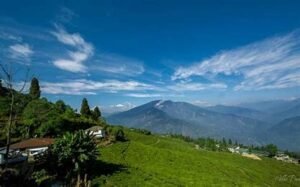Kaziranga National Park is situated in the northeastern Indian state of Assam. It is one of India’s most iconic wildlife sanctuaries. Kaziranga is famously recognized for its rich biodiversity and vibrant ecosystem. Most importantly, it is home to the world’s largest population of the Indian one-horned rhinoceros (Rhinoceros unicornis). The national park spans over 1,000 square miles along the banks of the Brahmaputra River. It has been recognized as the UNESCO World Heritage Site. It is not just a sanctuary for rhinoceroses but also a haven for various other species of flora and fauna.
In this blog post, we will explore the various wonders of Kaziranga National Park, its significance, conservation efforts, and more.
Legacy of Kaziranga National Park
Kaziranga’s history dates back to 1905, when it was established as a forest reserve. However, it wasn’t until 1974 that the area was officially designated as a national park. Since then, Kaziranga has grown to be one of India’s most important wildlife sanctuaries, attracting thousands of visitors each year.
Kaziranga’s Role in Rhino Conservation
Kaziranga National Park is synonymous with the Indian one-horned rhinoceros. There was an active threat to extinction due to poaching and habitat destruction. This problem was recognized and the authorities decided to take active action against it. Since then, the park has played a significant role in the conservation of this magnificent creature.
As of recent estimates, Kaziranga is home to more than 2,400 one-horned rhinoceroses, which accounts for over 70% of the global population. The success of Kaziranga’s rhino conservation program is a testament to the diligent efforts of the park authorities, wildlife activists, and the local community. The park has not only safeguarded the rhino population but has also contributed to increasing its numbers, proving that focused conservation strategies can yield results.
Unique Biodiversity of Kaziranga
Kaziranga is spread across 40 km (25 mi) in length from east to west, and 13 km (8 mi) in
breadth from north to south. It is interesting to know that it fosters a lot of diversity apart from the infamous one-horned rhinos. The park is a biodiversity hotspot. It shelters a wide range of flora and fauna. It is home to several endangered species and boasts an exceptional diversity of habitats. It also includes grasslands, wetlands, and forests.
Some of the remarkable species found in Kaziranga include:
● Royal Bengal Tiger: The park is also renowned for its population of Royal Bengal tigers, which, along with the rhinoceroses, are one of the primary attractions for wildlife enthusiasts. The park’s effective management and dedicated anti-poaching efforts have
helped stabilize the tiger population, contributing to its gradual increase in numbers.
● Elephants: Kaziranga provides a vital habitat for the Indian elephant, with herds often roaming through the park’s grasslands and forests. The park is a critical area for elephant conservation in India, offering both a safe haven and migratory routes for these
majestic creatures.
● Wild Water Buffalo: The wild water buffalo is another endangered species found within Kaziranga. The park’s wetlands are ideal for these buffaloes, providing a peaceful and protected environment for them to thrive.
● Birdlife: The park is a paradise for bird watchers, with over 500 species of birds recorded. Kaziranga’s wetlands are particularly important for migratory birds, including the endangered Indian bison, swamp partridges, and various waterfowl.
● Flora: The rich variety of plants and trees in Kaziranga includes grasses, herbs, shrubs, and several species of trees like sal, teak, and water-loving plants. These flora species provide critical food and shelter for the park’s diverse wildlife.
Conservation Efforts in Kaziranga
Kaziranga’s success in wildlife conservation can be attributed to the effective management practices and the concerted efforts of various organizations, local communities, and the government. Some key conservation strategies include:
● Anti-Poaching Measures: Poaching for rhino horns, tiger skins, and other animal parts has historically been a significant threat. The park employs armed forest guards and a robust surveillance system to prevent poaching. The park also involves local
communities in anti-poaching activities, providing them with incentives for conservation efforts.
● Habitat Restoration: Habitat loss is a major issue for wildlife conservation worldwide, but Kaziranga has worked hard to restore and protect its ecosystems. Efforts include maintaining the park’s grasslands, wetlands, and forested areas, which support a diverse
range of species.
● Community Involvement: The local community plays a key role in the conservation of Kaziranga. By educating villagers about the importance of protecting wildlife, providing alternative livelihoods, and encouraging eco-tourism, the park has fostered a sense of
ownership and responsibility among locals.
● Scientific Research: Ongoing research and monitoring efforts by wildlife experts help to better understand the park’s biodiversity and identify areas for improvement in its management. The park also works in collaboration with national and international
conservation organizations to develop sustainable solutions.
Kaziranga National Park is divided into four distinct ranges, each offering unique opportunities to explore the park’s diverse ecosystems and wildlife.
1. Kohora Range: This is the most popular range of Kaziranga. It is known for its accessibility and abundance of wildlife. Located in the central part of the park, Kohora is home to the park’s largest concentration of the famous one-horned rhinoceros. It has tigers, wild elephants, and various bird species, stunning landscapes, including vast
grasslands and wetlands.
2. Bagori Range: Situated to the west of Kohora, Bagori offers a more secluded experience. This range is less crowded. It is known for its rich flora and fauna, including sightings of rhinos, wild buffaloes, and various species of deer. Bagori is also home to many migratory birds, making it a bird watcher’s paradise.
3. Agoratoli Range: Located in the eastern part of the park, Agoratoli is known for its dense forests and serene riverine landscapes. The range offers a more diverse habitat for wildlife, with sightings of tigers, elephants, and swamp deer. Agoratoli is also famous for its rich birdlife, attracting both amateur and professional birdwatchers.
4. Burapahar Range: Located in the northernmost part of the park, Burapahar is distinguished by its hilly terrain and forested landscapes. This range is known for its unique topography, where the rolling hills and dense jungles offer a contrasting experience compared to the other ranges. This section is filled with wild elephants, leopards, and the occasional tiger.
Conclusion
Kaziranga National Park stands as a living testament to the power of conservation. With its successful rhino conservation program, rich biodiversity, and scenic landscapes, the park continues to inspire wildlife enthusiasts and conservationists worldwide.
Kaziranga’s breathtaking landscapes, ranging from lush grasslands and wetlands to dense forests and hilly terrains, provide a rich and diverse habitat for its abundant wildlife. The park’s commitment to conservation has helped protect many endangered species, including the iconic one-horned rhinoceros, and it continues to be a significant site for wildlife preservation in India. With its varied ecosystems, the park offers a unique and immersive experience, allowing visitors to connect with nature while observing some of the most remarkable wildlife in the world.




